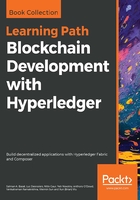
What applications are a good fit?
Organizations will need to establish criteria for use during the application design process to help them assess where they can best apply blockchain technology. The following are some examples of criteria that could help an enterprise determine which applications or systems would benefit from it:
- Applications that adhere to trade, trust, and ownership: As described previously, these three tenets—trade, trust and ownership—are fundamental to any blockchain system. Trade and ownership imply the churn and the transfer of ledger entries, while trust points to the trustless nature of a transaction system.
- Applications that are fundamentally transactional in nature: There is often a debate about why we can't achieve the benefits of blockchain from a distributed database, that is, a no-SQL or a relational database. But a multi-party transaction is what makes an application suitable for blockchain. There needs to be long-running processes with numerous micro-transactions that will be verified and validated by the blockchain-powered transaction system. However, databases can still be used for persistence or replication to fit enterprise systems. Other considerations include small data set sizes that could increase over time, logging overhead, and so on.
- Business networks that are comprised of non-monopolistic participants: This third criteria addresses distributed versus decentralized computation models. Blockchain trust systems can work within any model; however, the trust aspect of a blockchain business network comes from multi-party participants with non-monopolistic participation (the consortium permissioned network model). Oligopolistic participation might be acceptable (the private permissioned network model), but it's essential to devise a trust model that assures the prevention of centralized control, even with rational behavior of the participants. Many internal use cases do not adhere to this principle and are more for distributed application models.
For enterprises trying to either understand or determine where to employ blockchain meaningfully, there's a simple approach to thinking through use case selection. An appropriate use case for a sustainable blockchain solution will achieve long-term business objectives and provide a strong return on technology investment.
This starts with an enterprise problem—an issue big enough for the enterprise to expend resources/time—and the recognition of cohorts that have the same problem. When companies realize that an enterprise problem is also an industry problem (such as security lending, collateral lending, and so on), they've found a use case where the promise of blockchain has the most potential.
While organizations are determining the benefits of various aspects of blockchain for their enterprise applications, they also need to recognize the fragmentation of the whole blockchain landscape. There are numerous innovative approaches available for solving a specific challenge with blockchain. A lot of vendors offer variants of the trust system that are specialized to address particular use cases, and they've defined the use cases that will benefit most from blockchain in a given industry, for example. Such specialized vendors often promise a fast solution to meet consumer demands for quick digital interactions.
The tenets of blockchain can be instrumental in delivering rapid consumer-driven outcomes such as decentralized, distributed, global, permanent, code-based, programmable assets, and records of transactions. We should exercise caution with regards to thinking of blockchain as a hammer to solve every enterprise application challenge, but it can be of use in many transactional applications.
Now, let's discuss how blockchain is perceived in the enterprise and some of the challenges that arise with enterprise adoption of the technology. In the following section, I'll focus on three areas that help set the tone for blockchain in an enterprise context.